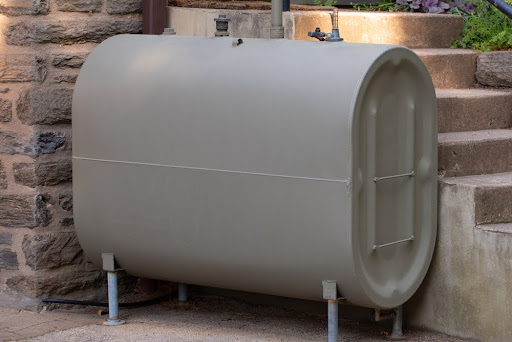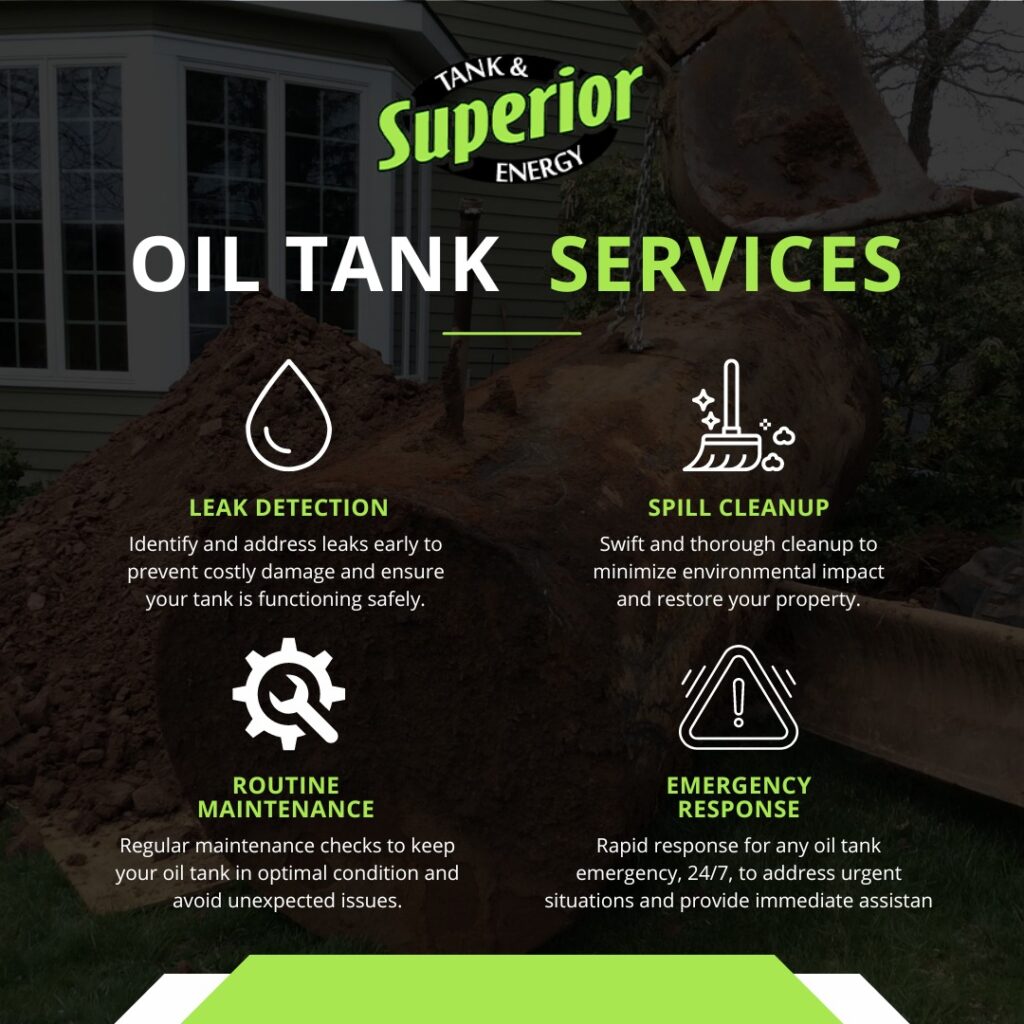
- Posted by: Superior
- 0 Comments
Common Reasons Why Oil Tanks Need Replacements
Common Reasons Why Oil Tanks Need Replacements
Oil tanks can play an important role in home comfort but eventually, they’ll need to be replaced with a new tank. However, when will the time come? There are several factors that can indicate that it’s time to schedule an oil tank removal. Let’s take a look at five common reasons why homeowners need to install a new oil tank.
Old Age
When an oil tank becomes too old, then you should consider a replacement. The average life expectancy of heating oil tanks varies but typically falls in the range of 15 to 30 years. However, factors like maintenance and the tank’s material can influence this range. An old oil tank may develop corrosion and rust on its surface, increasing the risk of oil leaks, which can lead to costly oil spills and environmental damage.
In addition to potential oil leaks, an old tank may have an outdated design that doesn’t comply with current oil tank installation codes — posing safety concerns. Replacing an old oil tank is essential to ensure the safe and efficient operation of your home’s heating system. While there is an oil tank replacement cost involved, avoiding potential hazards and adhering to regulatory requirements is well worth the price.
Visible Damage
When an oil tank shows signs of physical damage, such as dents and structural weaknesses, it is imperative that you consider replacing it. Physical damage can compromise the integrity of the tank’s structure, increasing the risk of oil leaks and spills. Dents and other forms of damage can weaken the tank’s surface, too, making it more susceptible to corrosion and rust.
Damaged oil tanks may also lead to fuel gauge inaccuracies, fuel line obstructions, and fuel filter problems — all of which can disrupt the heating system’s functionality. While oil tank replacement costs can be a concern, the expense is justified to prevent potential environmental damage, maintain the efficiency of your heating system, and ensure the safety of your home.
Wet Spots
Oil tanks with wet spots and leaks are prime candidates for oil tank replacement. Leaks in an oil tank can occur due to corrosion, rust, or damage to the tank’s surface. These leaks not only result in significant oil spills but can also lead to costly soil and groundwater contamination. Oil leaks are environmentally hazardous and can lead to fines and legal repercussions.
Additionally, leaking oil tanks can compromise the efficiency of your heating system, causing it to work harder and consume more fuel. Therefore, prompt action is essential to replace an oil tank displaying signs of leaks and wet spots, with the oil tank replacement cost being a small price to pay compared to the potential environmental and financial consequences.
Poor Location
When an oil tank is installed in a poor location that exposes it to harsh weather conditions, it may be necessary to replace the tank. Outdoor tanks, for example, are susceptible to extreme temperatures, moisture, and other weather-related factors that can accelerate corrosion and rust. Such conditions can lead to a premature failure — posing a risk of oil leaks and environmental harm.
Moreover, tanks installed in areas with inadequate secondary containment measures may not meet local regulations, resulting in potential legal issues. To avoid these problems and ensure the longevity of your heating oil tank, it may be wise to consider relocating and replacing the tank in a more suitable location despite the associated oil tank replacement costs.
Unsupportive Legs
Oil tanks with weak and unsupportive legs are a cause for concern and can warrant an entire replacement. The tank’s legs provide crucial support — and when they become compromised, the tank may lean or shift, potentially causing oil lines, fuel lines, and vent pipes to disconnect or break. This can disrupt the functioning of your heating system and lead to oil leaks and spills.
Replacing an oil tank with weak legs is essential to prevent such issues and ensure the safe operation of your home heating system. While there is a cost associated with oil tank replacement, it is a necessary investment to avoid more extensive damage, oil spills, and additional costs for repairs and cleanup.
Whether You Need an Above or Underground Oil Tank Replacement, We’ll Be There to Help
At Superior Tank & Energy, we’re proud to offer professional tank installation services in New Jersey and Pennsylvania locations. Our experienced team can lend a hand in other ways, too, such as with tank repair, environmental services, and more. Contact us today to learn more about our oil tank replacement services and to schedule your appointment.
Categories
Recent Post
Archives
- December 2025
- November 2025
- October 2025
- September 2025
- May 2025
- April 2025
- March 2025
- February 2025
- January 2025
- September 2024
- September 2023
- July 2023
- May 2023
- March 2023
- January 2023
- November 2022
- July 2022
- May 2022
- March 2022
- January 2022
- November 2021
- September 2021
- July 2021
- April 2021
- December 2019






Recent Comments